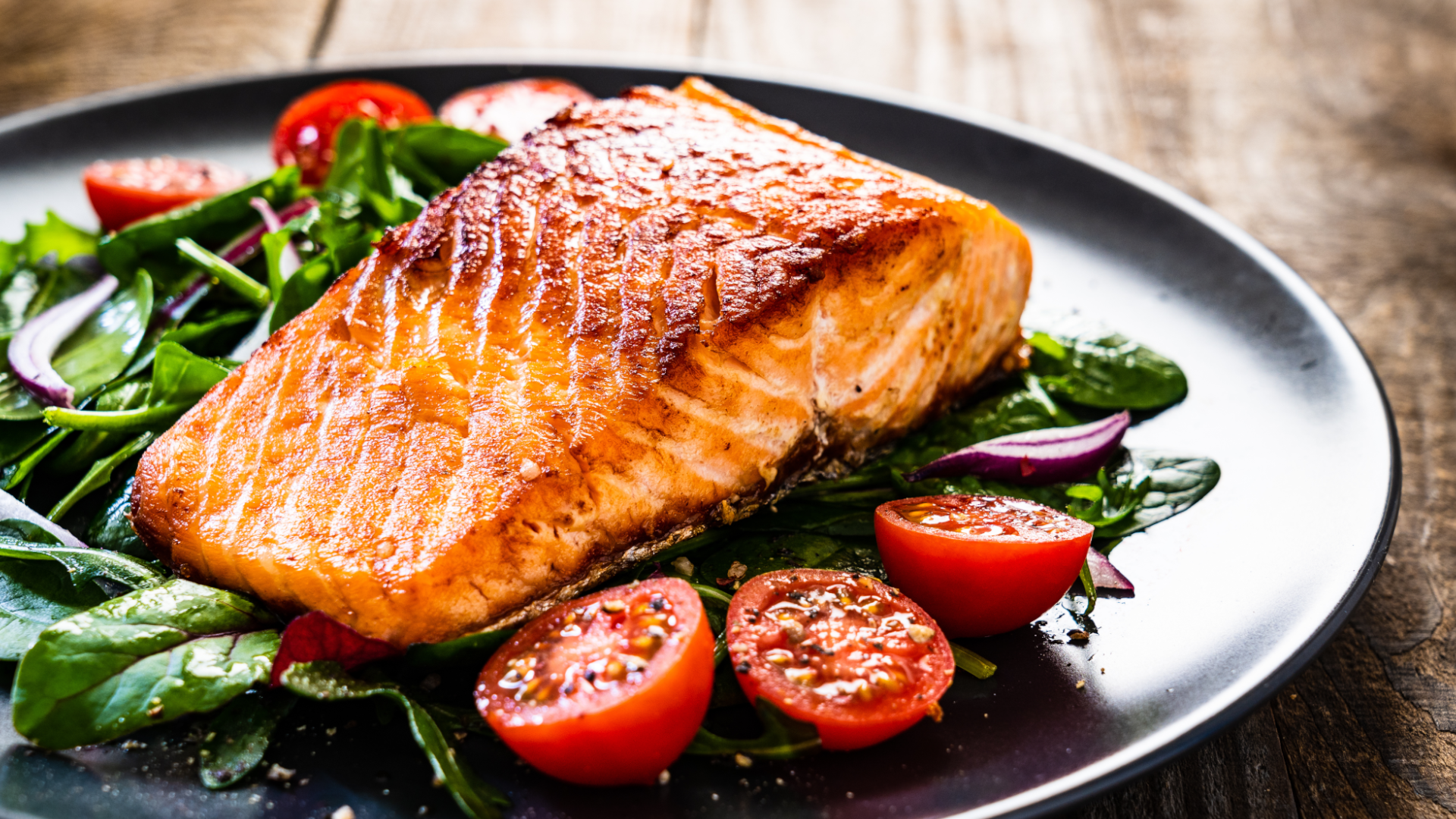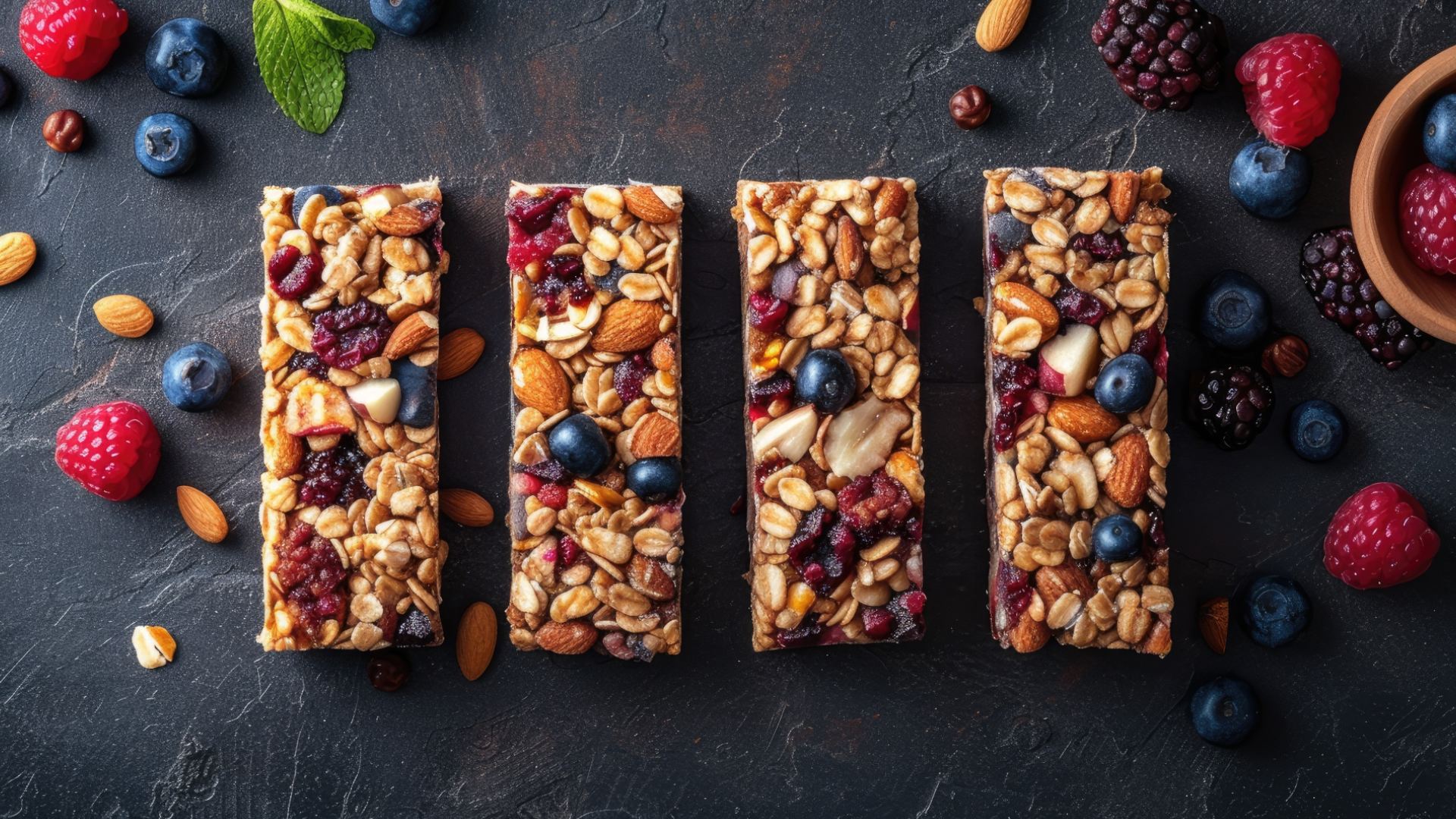You’re here to learn about cutting and bulking, right? Great. Because we’ve got all the info you need.
Whether you’re here to learn how to gain weight or you want to lose body fat, we’re gonna explain how to bulk up and cut down the right way.
Here, we’ll cover everything you need to know about cut versus bulk. We’ll go deep into how to drop body fat, gain muscle and the transition between the two. Hell, we’ll even throw in how to use supplements to smash your goals.
So if you want game changing info for your bodybuilding journey, start reading now.
What is bulking and cutting?
Do you have two phases in your workout cycle that aim to shed fat and pump up muscle mass? If not, it's high time you did.
It’s called…you guessed it—bulking and cutting.
These two power-packed phases are the dynamos in your diet and workout cycle, working hand in hand to help you achieve your muscle-building and fat-shredding goals.
Let's kick things off with bulking.
This phase lets you take command and deliberately gain body weight with a sole mission: To build muscle mass.
The bulking phase in bodybuilding is a period where individuals focus on increasing muscle mass and overall body weight through a structured nutrition and training plan.
During this phase, the primary goal is to consume a calorie surplus, which means consuming more calories than the body needs to maintain its current weight. Doing so supports muscle growth and your resistance training performance.
For instance, let's say your estimated calorie maintenance level is 2500 calories per day.
Okay now onto the cutting phase!
This phase is all about sculpting that ideal physique by shedding excess body weight and improving your muscle to body fat ratio. The secret sauce? Creating a calorie deficit, which means consuming fewer calories than you burn.
To lose weight, you would aim to consume fewer calories than your total daily energy expenditure (TDEE).
A common approach is to reduce your daily calorie intake by about 250 to 500 to aim for a safe weight loss of about 1-2 pounds per week.
For example, if your TDEE is 2,500 calories, you might start by consuming 2,000 calories per day to create a deficit.
So, whether you're bulking up or cutting down, understanding and implementing these phases the right way will unlock your ideal body composition.
But how do you figure out when you should be bulking and when you should be cutting?
Bulk Vs Cut: Which One Should I Do?

Let’s talk a bit about whether you need bulking, cutting or both—and when you should do them when aligning with your body-boosting goals.
Bulking
The main aim of bulking is to gain muscle mass and strength. It's ideal for those looking to build a larger physique with more power behind their lifts.
What you need to do…
- To achieve a successful bulk, you will need to consume more calories than your body burns daily
- You can do this by increasing your intake of proteins, carbohydrates, and fats to supply the fuel your muscles need to grow
- Strength training is crucial during this phase, with a focus on progressive overload to continually challenge your muscles to adapt and grow
Body composition…
During a bulk, you can expect to see an increase in body weight, which could be both muscle and some fat due to the caloric surplus.
Your body composition will change as your muscles become larger and the overall volume of your physique expands.
Cutting
The purpose of cutting is to reduce body fat while maintaining as much muscle mass as possible. It's for those who want a leaner, more defined appearance or need to drop weight for health or athletic reasons.
What you need to do…
- Cutting requires a caloric deficit where you will consume fewer calories than your body expends
- This phase will often involve adjusting your diet to focus on high-quality, nutrient-dense foods
- You’ll also need to add more cardio into your fitness regimen alongside continued strength training to help preserve muscle mass
Body composition…
When cutting, you'll notice a decrease in body weight, primarily from fat loss.
Ideally, if you're preserving muscle, the size of your muscles will remain similar, giving you a more toned and defined look as the overlaying fat diminishes.
We recommend that men who have a body fat percentage of less than 15%, and women who have a body fat percentage of less than 25%, avoid cutting unless you have specific goals ie. training for a competition.
Bulking versus cutting
Which phase you should enter—bulking or cutting—depends on your current body composition and your goals.
Choose bulking when…
- You're pretty lean and want to add size and strength to your frame
- You're willing to accept some increase in body fat in exchange for muscle growth
- You have the capacity to consume a higher-calorie diet and are committed to an intensive strength training regimen
- Choose cutting when…
- You want to decrease your body fat to enhance muscular definition or for health reasons
- You’re already carrying a satisfactory level of muscle mass that you'd like to reveal more clearly
- You're comfortable with eating fewer calories and potentially adding more cardio into your workout routine
Achieving each one…
Whether you're bulking or cutting, both require a disciplined approach to diet and exercise.
For bulking, your diet will be more abundant, and lifting heavier weights will be your gym focus.
For cutting, calorie intake will be more controlled, with a mix of weights and cardiovascular exercise to preserve muscle and encourage fat loss.
Body composition…
In both bulking and cutting, monitoring your body composition is essential. This lets you track changes and adjust as needed.
While bulking, your aim is to maximize muscle gain with minimal fat. During cutting, the objective is to maintain muscle while losing fat.
The end goal is a change in your body composition towards a higher muscle-to-fat ratio.
How To Drop Your Body Fat Percentage Without Losing Muscle Mass

Ready for our step by step guide on how to drop your body fat without muscle loss?
Let’s go.
Step 1. Calculate your caloric needs
Find your TDEE (Total Daily Energy Expenditure) to estimate your calorie maintenance level.
Create a deficit of 250 to 500 calories per day from this number for safe fat loss without sacrificing muscle.
Step 2. Prioritize protein intake
Ensure you consume high-quality protein at one gram per pound of body weight to support muscle maintenance. Good sources include lean meats, fish, eggs, dairy, legumes, and protein powders.
Step 3: Adjust carbohydrate and fat intake
Allocate the remaining calories between carbohydrates and fats. Opt for nutritious and energy-sustaining carbs and healthy fats that are essential for hormone health.
Step 4: Strength train regularly
Use strength training to signal your body to hold onto muscle tissue. Try compound exercises that work various muscle groups. At least three to four sessions per week are recommended.
Step 5: Add in cardiovascular exercise
Add moderate amounts of cardio to your routine. Consider HIIT sessions for efficient fat burning that also conserves muscle mass. Perform cardio two to three times a week.
Step 6: Monitor your progress
Use tools that measure body composition changes to track fat loss and muscle preservation.
If progress halts, reassess and modify your calorie and nutrient intake, but be careful not to cut protein.
Step 7: Ensure adequate recovery
Quality sleep is crucial for recovery and muscle maintenance. Rest days are important to let your body repair and strengthen.
Step 8: Stay hydrated

Drink water to support metabolism and recovery processes. You should aim to start drinking small amounts of water at least four hours before exercise, with the goal of getting fueled up before your workout.
This pre-exercise hydration is really important to prevent dehydration during the activity.
During exercise, aim to consume about six to 12 ounces of water every 15 to 20 minutes.
Step 9: Be patient and consistent
Set sensible goals and understand that losing fat while retaining muscle is a gradual process. Consistency is key to long-term success.
Step 10: Consider supplementation
Did you know? Supplementation can play a great role in optimizing muscle gains during bulking phases and preserving muscle during the cutting phases.
Well, while whole foods should always be the foundation of your nutrition plan, supplements can provide extra benefits that might be harder to achieve through diet alone.
Bulking phase and supplements…
During a bulking phase, as we know, the goal is to build as much muscle as possible.
Here are the supplements people use to build muscle…
- Protein supplements such as Whey, casein, or plant-based protein powders help ensure you meet your daily protein requirements and aid in muscle growth and repair
- Creatine supports ATP replenishment, which can boost performance during high-intensity workouts. Creatine supplements also assist in significant strength gains and muscle growth
- BCAAs (Branched-Chain Amino Acids) may help enhance muscle protein synthesis and reduce muscle breakdown during intense training
- Weight gainers are high-calorie supplements that help individuals who have a hard time consuming enough calories through whole foods alone
- Multivitamins and minerals are really important to be on top of so you can get optimal muscle function especially if your increased calorie intake is not coming from nutrient-dense foods
Cutting phase and supplements
You know it by now during a cutting phase, the goal is to lose fat while preserving muscle mass.
Supplements that may help are…
- Protein supplements help preserve lean muscle mass when calorie intake is lower
- BCAAs can be particularly useful during calorie restriction to help maintain muscle mass
- Omega-3 fatty acids can be found in fish oil supplements and may aid in muscle preservation and offer anti-inflammatory benefits
- Fat burners can include a combination of ingredients like caffeine, green tea extracts, and other components that claim to boost metabolism and increase fat oxidation
- L-Glutamine is an amino acid that may help with muscle recovery and could potentially prevent muscle loss during periods of calorie restriction
- Vitamin D and calcium aid in maintaining bone health
- Fiber Supplements are useful for appetite control and maintaining digestive health
How To Gain Muscle Without Gaining Fat. a.k.a. The “Lean Bulk”

Bulking might seem like the easy part. But making sure you don’t gain excess fat while you are doing it makes things more difficult. But it takes a careful approach to get it right.
You want to boost muscle growth, but it doesn’t mean you can stuff your face with saturated fat and non-nutritious excess calories.
Step 1: Get your nutrition right
Begin by calculating your calorie needs to maintain your current weight and add a moderate surplus of 200 to 300 calories to support muscle growth.
Focus on a balanced diet consisting of whole foods, with an emphasis on protein to aid muscle repair and growth. Aim for about 1 gram of protein per pound of body weight.
Distribute your calories across carbohydrates, proteins, and fats in a way that suits your body's reaction to these macronutrients. Typically, a ratio of 40% carbs, 30% protein, and 30% fats can be a good starting point.
Step 2: Emphasize strength training
Prioritize compound movements such as squats, deadlifts, bench presses, and rows that work multiple muscle groups, as they are more efficient for gaining strength and muscle.
Include a mix of volume (more sets and reps) and intensity (heavier weights with fewer reps) throughout your training phases.
Ensure progressive overload by gradually increasing the weight or the number of repetitions over time to challenge your muscles continuously.
Step 3: Use tools to monitor
Keep track of both your body composition and your strength gains. Use tools like body fat scales, measuring tapes, or even progress photos to monitor changes.
Adjust your calorie intake based on your progress. If you're gaining too much fat, slightly decrease your calorie surplus. You might need to increase your calorie intake if you're not gaining muscle.
Step 4: Be rested for the best results
Allow each muscle group to rest for at least 48 hours before targeting it again to enable muscle repair and growth.
Get enough sleep, aiming for seven to nine hours per night, as poor sleep can affect muscle recovery and growth.
How Long Should You Cut Or Bulk For?

There is no set answer to this and it very much depends on how much muscle you would like to gain or how much fat you need to lose.
But there is some general advice on how long for bulking and cutting.
When bulking, a solid timescale is focus on is four to six months. This time frame is ideal for you to build muscle without accumulating excessive body fat.
For cutting, it’s about two to four months for gradual weight loss. But this can vary depending on how much fat you want to lose and how your body responds to the calorie deficit.
A slower rate of fat loss preserves muscle better, so avoid overly extended cuts that are too aggressive, as this can sacrifice hard-earned muscle.
How to transition from cutting to bulking…
Don’t make the transition a hard or dramatic one. Gradually move from one to the other using a calorie maintenance plan for a couple of weeks to avoid weight gain from fat.
Start by slowly increasing your caloric intake, adding back in 100 to 200 calories per week until you reach your calculated surplus for bulking.
How To Cut And Bulk When You First Start Lifting
Look no further if you’re new to lifting weights and building muscle. We’ve got all the advice you need to maximize muscle growth as a beginner below.
Starting point
Evaluate your body composition. If you have a higher body fat percentage, consider starting with a cutting phase to lean down. Conversely, if you're already lean, you can kick off with a bulking phase to build muscle mass.
Bulking as a beginner

Here's what you need to know.
Modest caloric surplus
Aim for a slight caloric surplus (about 200 to 300 calories above your maintenance). This will facilitate muscle growth without excessive fat gain.
Focus on compound lifts
Engage in exercises that work multiple muscle groups (e.g., squats, deadlifts, bench presses) to maximize strength and see increased muscle mass.
Monitor progress
Regularly check your progress to ensure that you're gaining muscle at a healthy rate. Adjust your intake as needed.
Cutting as a Beginner
Again, here’s what you need to know.
Mild caloric deficit
Start with a small deficit (about 500 calories less than your maintenance) to lose fat while preserving muscle.
High protein intake
Keep your diet high in protein to support muscle maintenance and growth, even in a caloric deficit.
Strength training and cardio
Combine strength training with moderate cardio to optimize fat loss while keeping your muscles engaged.
In fact, you might not feel the need to cut or bulk at all. Maintain your current calorie intake while increasing how much you exercise, and you may be able to simultaneously lose fat and gain muscle for a few months.
Make sure you improve your diet while you do this by upping your protein intake and eating fruit, vegetables, nuts, legumes, fish etc. At this stage, small improvements in your diet can make a real difference.
Using Protein Supplements For Bulk Vs Cut
If you’re not already taking protein shakes, this is the time to start. Whether you are following a cutting, bulking or calorie maintenance programme, protein shakes can help you achieve your goals.
Crazy Nutrition’s Mass Gainer is packed with not just protein but also additional clean calories to help you reach the surplus needed for bulking. Struggle to hit your calorie surplus? Never again.
You can also try Tri-Protein for both bulking and cutting. This product is designed to release protein at different stages, ensuring a sustained supply to your muscles. That means the building blocks for growth are in neverending supply.
But not just that. Tri-Protein can play a key role in the cutting phase by providing high-quality protein without excessive calories. This helps maintain muscle mass even in a calorie deficit.
For pure cutting, the 100% Whey Isolate has a low fat content and high carb content. It delivers energy without the calories, protein to your muscles and helps you work at your best even when your body is in a calorie-restricted state.
Also, check out our blog for all the latest expert tips and tricks for bulking vs cutting and beyond. You’ve got this.



